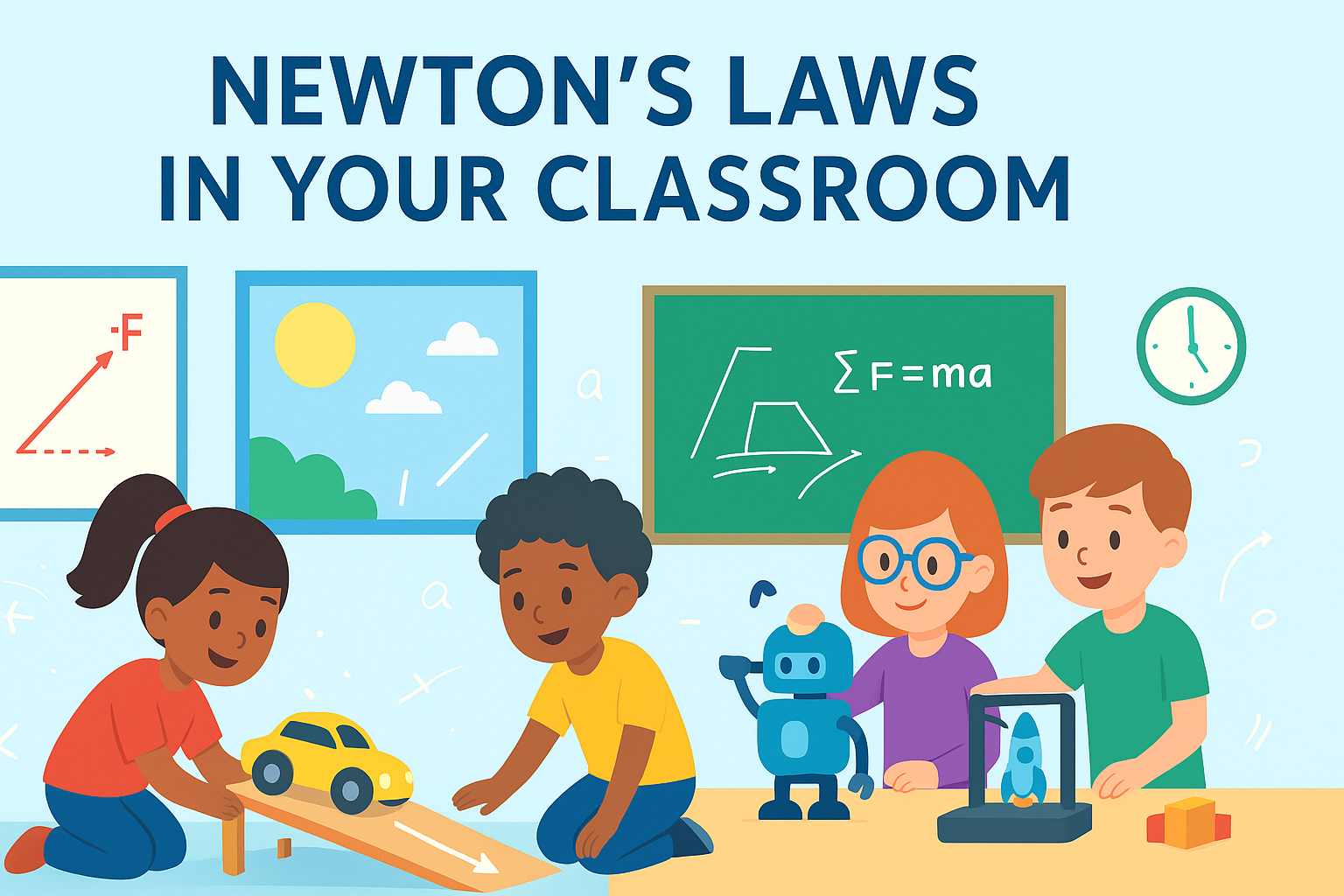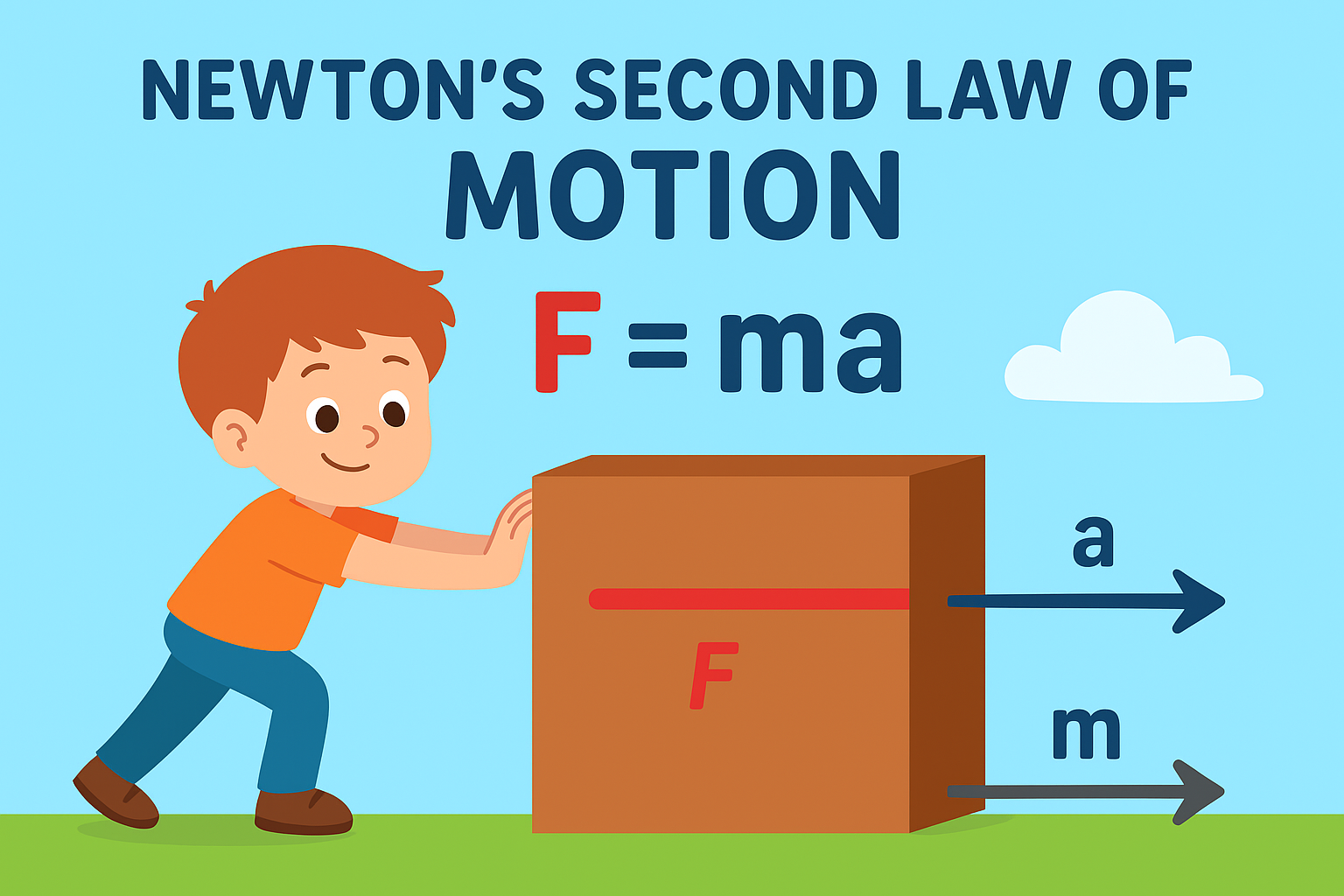
Why STEM Education Needs a Physics Revolution
What if the same principles that helped Newton understand motion could revolutionize how your students grasp STEM concepts? The answer lies not in an apple falling from a tree, but in the digital classroom tools that bring physics, engineering, and mathematics to life.
Elementary and middle school educators usually face a challenge: teaching complex STEM concepts to students who learn differently from previous generations. Traditional textbook approaches often fail to capture the imagination of today’s digital natives. However, innovative educators are discovering that SOLIDWORKS Apps for Kids can provide the missing link between theoretical concepts and hands-on understanding.
The Newton Connection: Why Physics Principles Matter More Than Ever
Sir Isaac Newton’s three laws of motion aren’t just historical footnotes, they’re the foundation of modern engineering, robotics, and space exploration. When students understand these principles through interactive design and simulation, they develop critical thinking skills that extend far beyond the classroom.
Research from the National Science Foundation shows that students who engage with design-based learning demonstrate 23% higher retention rates in STEM subjects compared to traditional lecture-based instruction. This data reinforces what forward-thinking educators already know: students need to experience science, not just read about it.
Real-World Applications in Your Classroom
Consider this classroom scenario: instead of memorizing Newton’s First Law, students use SOLIDWORKS Apps for Kids to design a simple car and test how different forces affect its motion. They observe inertia firsthand, adjust variables, and see immediate results. This approach transforms abstract concepts into tangible understanding.
The curriculum alignment is seamless. Whether you’re teaching:
- Force and Motion (Grade 5 Physical Science Standards)
- Simple Machines (Grade 3-5 Engineering Design)
- Energy Transfer (Middle School Physics Standards)
SOLIDWORKS Apps for Kids provides the interactive platform that meets these educational objectives while engaging students in authentic engineering practices.
Breaking Down Barriers: Addressing Common STEM Teaching Challenges
Many educators express concern about integrating technology into STEM instruction. The reality is that SOLIDWORKS Apps for Kids can address the most pressing challenges facing today’s STEM teachers of elementary and middle schools:
- Challenge 1: Limited Time for Lesson Preparation
The platform includes pre-built lesson plans aligned with curriculum standards. Teachers can implement activities without extensive preparation time, making it ideal for busy educators managing multiple subjects. - Challenge 2: Varied Student Ability Levels
The intuitive interface accommodates different learning styles and technical abilities. Visual learners engage with 3D models, kinesthetic learners manipulate virtual objects, and analytical learners examine data from their simulations. - Challenge 3: Budget Constraints
Unlike expensive physical lab equipment, SOLIDWORKS Apps for Kids provides unlimited virtual materials. Students can iterate designs, test multiple variables, and explore complex concepts without consuming physical resources.
The Newton Calendar Approach: Year-Round Physics Integration

Rather than confining physics to a single unit, successful STEM educators are adopting what we call the “Newton Calendar” approach, integrating physics principles throughout the academic year across multiple subjects and activities.
- Fall Semester: Focus on Newton’s first law through sports science connections. Students analyze why football players need to keep running after catching a ball, or why ice skaters glide so smoothly.
- Winter Months: Explore Newton’s second law through winter sports and weather phenomena. Calculate the forces involved in sledding or examine how snowflakes fall at different rates.
- Spring Activities: Investigate Newton’s third law through rocket launches, plant growth forces, and playground physics.
This approach ensures that physics becomes a lens for understanding the world rather than an isolated subject to master and forget.
The Science of Engagement: Why Digital Design Tools Work
Cognitive science research demonstrates that students learn best when they can visualize abstract concepts. Dr. Richard Mayer’s multimedia learning theory proves that combining visual and auditory information increases comprehension by up to 89%.
SOLIDWORKS Apps for Kids leverages this principle by allowing students to:
- Visualize concepts through 3D modeling
- Test hypotheses through simulation
- Iterate designs based on results
- Document their learning process
This approach mirrors real-world engineering practices, preparing students for future STEM careers while building foundational knowledge.
Implementation Strategies That Work
Successful STEM educators have developed proven strategies for integrating SOLIDWORKS Apps for Kids into their curricula:
The Newton Unit Approach
Structure a multi-week unit around Newton’s laws:
- Week 1: Students design objects and predict motion
- Week 2: Test designs using simulation tools
- Week 3: Modify designs based on Newton’s principles
- Week 4: Present findings and reflect on learning
Cross-Curricular Integration
Mathematics concepts emerge naturally through design challenges. Students calculate forces, measure distances, and analyze data—making math relevant and purposeful.
Collaborative Problem-Solving
Pair programming techniques work effectively with design software. Students collaborate on projects, discuss solutions, and learn from peer expertise.
Measuring Success: Evidence-Based Results
Schools implementing SOLIDWORKS Apps for Kids report measurable improvements in student outcomes:
- 85% of students demonstrate increased interest in STEM careers
- 78% improvement in spatial reasoning assessments
- 92% of teachers report higher student engagement during STEM lessons
- 67% increase in students pursuing advanced STEM courses
These results reflect the program’s effectiveness in building both knowledge and enthusiasm for STEM learning.
The Future-Ready Classroom
Today’s elementary and middle school students will enter careers that don’t yet exist. However, the fundamental principles they learn through design thinking and engineering practices will remain constant. SOLIDWORKS Apps for Kids doesn’t just teach software skills, it develops problem-solving abilities, creative thinking, and technical communication skills essential for future success.
The integration of Newton’s timeless principles with modern technology creates a powerful learning environment. Students discover that the same laws governing planetary motion also influence their virtual car designs. This connection between historical scientific discoveries and contemporary applications helps students understand science as an ongoing human endeavor.
Taking Action: Your Next Steps
The evidence is clear: interactive design tools like SOLIDWORKS Apps for Kids enhance STEM learning while addressing practical classroom challenges. The question isn’t whether to integrate these tools, but how quickly you can begin transformation.
Start your journey toward more engaging STEM instruction by exploring SOLIDWORKS Apps for Kids today. Your students deserve learning experiences that prepare them for tomorrow’s challenges while building on yesterday’s discoveries. Newton’s apple may have fallen centuries ago, but the principles he discovered continue to elevate
Back to Blog
